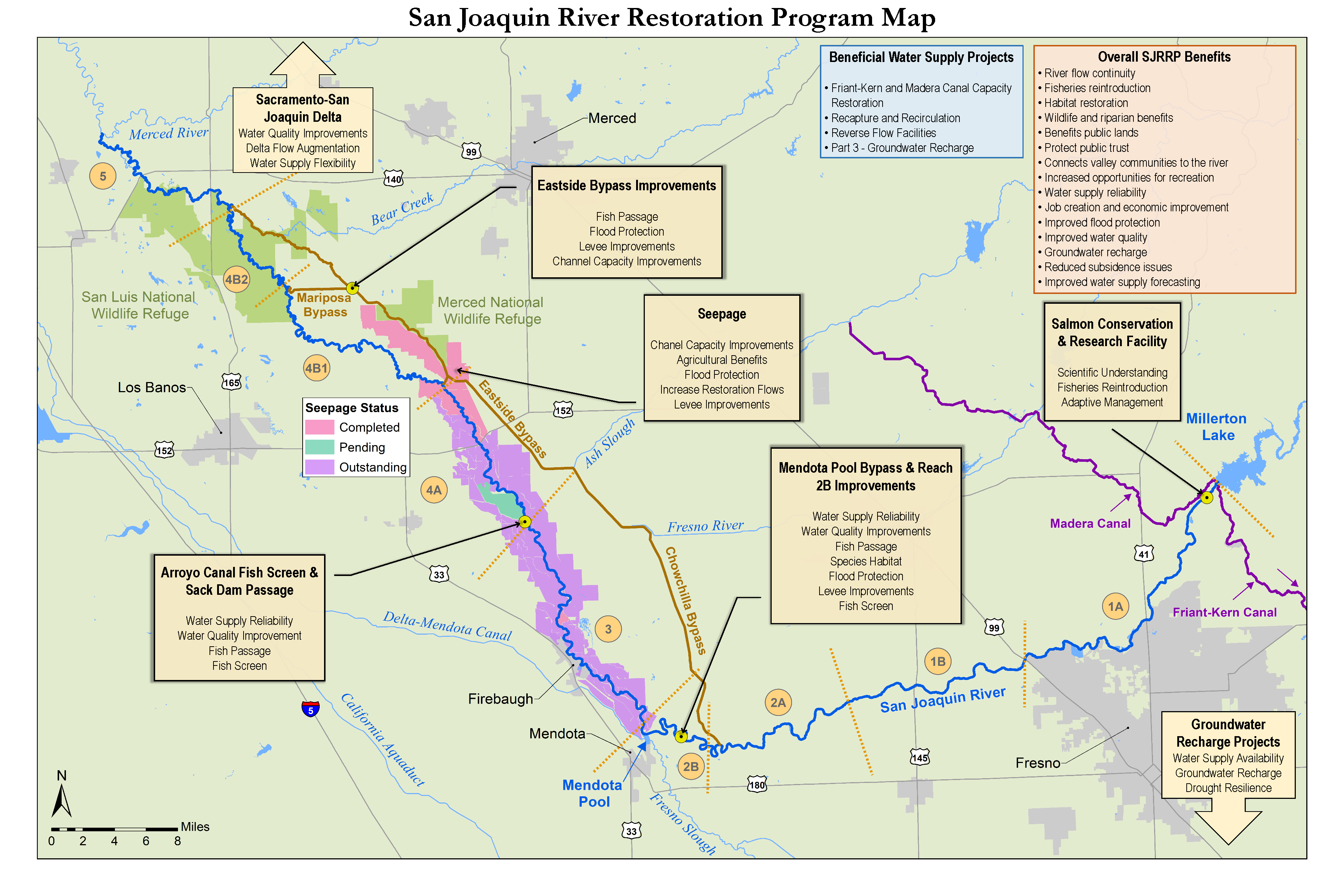San Joaquin River Restoration Settlement
The San Joaquin River Restoration Program is the direct result of the San Joaquin River Restoration Settlement reached in September 2006 by the U.S. Departments of the Interior and Commerce, the Natural Resources Defense Council (NRDC), and the Friant Water Users Authority (FWUA). The Settlement, which followed an 18-year lawsuit, received Federal court approval in October 2006.
Federal legislation, the San Joaquin River Restoration Settlement Act, was passed in March 2009 authorizing Federal agencies to implement the Settlement.
Two Settlement Goals
The Settlement is based on two goals:
 Restoration: To restore and maintain fish populations in “good condition” in the main stem of the San Joaquin River below Friant Dam to the confluence of the Merced River, including naturally reproducing and self-sustaining populations of salmon and other fish.
Restoration: To restore and maintain fish populations in “good condition” in the main stem of the San Joaquin River below Friant Dam to the confluence of the Merced River, including naturally reproducing and self-sustaining populations of salmon and other fish.
 Water Management: To reduce or avoid adverse water supply impacts to all of the Friant Division long-term contractors that may result from the Interim Flows and Restoration Flows provided for in the Settlement.
Water Management: To reduce or avoid adverse water supply impacts to all of the Friant Division long-term contractors that may result from the Interim Flows and Restoration Flows provided for in the Settlement.
Legislation & Funding
Legislation – San Joaquin River Restoration Settlement Act, part of the Omnibus Public Land Management Act of 2009
- Public Law 111-11 Title X
- March 30 – Signed by the President and became Public Law 111-11
Authorization and Funding
Planning and environmental studies are currently being completed under the authority and funding of the Central Valley Project Improvement Act (CVPIA). Signed in 1992, the CVPIA included provisions for developing a restoration plan for the San Joaquin River and instituted a fee structure for Friant Division contractors for such activities.
With the passage of Public Law 111-11 in March 2009, the Settlement establishes the San Joaquin River Restoration Fund (Fund). Approximately $17 million per year of payments from the Central Valley Project Friant Division would be deposited into the Fund to be available without further appropriations to implement the provisions of the Settlement.
Funding by the State of California will also support the Settlement. In November 2006, State propositions 84 and 13 were passed by the California voters and should provide about $200 million of State bond funds for projects that will directly contribute to the restoration efforts.
Funding Sources
Funding for the implementation of the Settlement will come from several sources:
- Friant Surcharge Collections:
- Friant contractors’ environmental fee expected to average about $5.6 million per year
- Friant Capital Repayment:
- Friant division water users’ capital component of their water rates redirected into the SJRR Fund
- Central Valley Project Improvement Act:
- Up to $2 million annually of other Friant Divison water users CVPIA Restoration Fund payments
- Federal Appropriations:
- Up to $300 million of additional Federal appropriations requiring a non-federal cost-share of an equivalent amount
- State funds:
- About $200 million in bond funds from Propositions 84 and 1E passed by California voters in 2006
Map of the Restoration Area
The Program Restoration Area is 150 miles of the San Joaquin River from the base of Friant Dam to the river’s confluence with the Merced River downstream. In 2018, the SJRRP underwent a planning process which produced the Funding Constrained Framework. Below is a map showing the reaches, prominent landmarks, and key co.mponents of the Framework (click here for a printable version of the map below). For an interactive Overview Map, click here

Have more questions about the SJRRP? Please send any questions to the Public Affairs Specialist, Josh Newcom, snewcom@usbr.gov or call him at (916) 978-5508.

